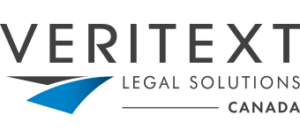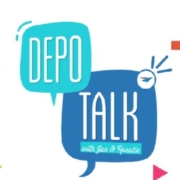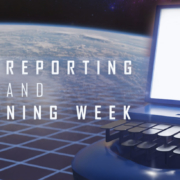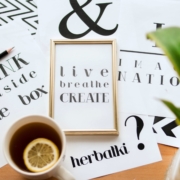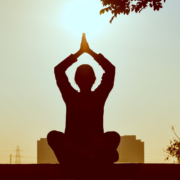Top questions asked and answered by the Veritext Transcription Team!
/in Industry, Industry Updates, Tips & Tricks/by Megan EjackOur dedicated legal transcription team oversees every step of the transcription process, and every transcript is thoroughly checked by our dedicated quality control department.
See here what it takes to succeed as a transcriptionist.
Are you Ready for Court Reporting & Captioning Week?
/in Court Reporting, Culture, Tips & Tricks, Webinars/by veritextcanada_48bzhl
The National Court Reporters Association (NCRA) has designated February 5th to 12th as the time to recognize and celebrate your decision to make court reporting and captioning your career.
We are happy to do our part in recognizing this week, so watch our social channels to see how we recognize our first Court Reporting & Captioning Week as part of the Veritext team.
Christy Pratt, our regional vice president, Canada West, is now on the Veritext Peer Advisory Council (VPAC). On February 9th she and her fellow council members are hosting what should be a lively discussion about their top tips, tricks and resources for stenographic court reporting students, recent grads and steno professionals. You can register here for this event.
This is the week to share your stories and experiences and tell the world why you love your job.
Throughout the week Leanne Kowalyk, realtime court reporter and our director of court reporting, Canada, will be sharing information and stories about the benefits of choosing court reporting as your career. The following week on February 15 she will be speaking to the captioning and court reporting students at NAIT about her advice and strategies on becoming a successful court reporter. She will also be interviewing a current student, who will share her experience in the program.
Recently we asked Leanne to look into her crystal ball, and she told us:
“I believe there will always be exciting opportunities for court reporters across Canada. Will there be changes along the way? Of course. Evolution is a necessary part of sustainable opportunity. The more doors that reporters have open before them, the more opportunities they will have, and there truly are so many.”
Feeling Anxious: You Are Not Alone
/in Culture, Fun, Industry, Innovation, Tips & Tricks, Wellness/by veritextcanada_48bzhlBy Kiran Deol, Business Development Coordinator
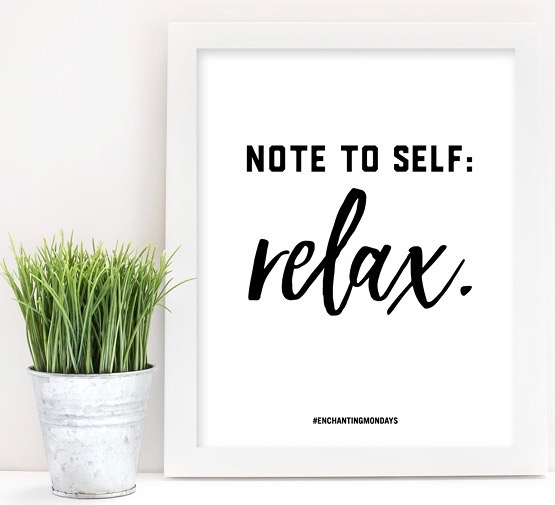
A major theme throughout our blog, especially this past year, has been wellness. This month has been no exception with what we have appropriately named “Mindful March,” bringing awareness to our mental health. We at Reportex keep close contact with our employees and have kept up to date with the needs of the legal industry during this pandemic, including ways to reduce workload stress.
I recently had the pleasure of attending a paralegal seminar put on by TLABC called “Rising Above Adversity.” Throughout this seminar we got to hear not only from paralegals in the industry but from lawyers who shared their struggles with anxiety even before the pandemic hit. It was refreshing to hear about struggle in such a highly regarded position and not only how to overcome those struggles but how to help all employees acknowledge their struggles in the workplace and at home. Reportex has acknowledged the changes and stressful situations our clients are faced with on a daily basis. Our new space reflects these changes and has areas where you can relax.
We hear about mental health more and more every day, which is great; however, in the last year only 1 in 10 people acknowledge they are suffering from anxiety. The first thing to know is that you are not alone. There are treatments, and anxiety is more common than you think. To acknowledge your anxiety, look out for the following signs: excessive worrying; difficulties sleeping; fatigue; concentration issues; irritability and tension; increased heart rate and palpitations; sweating and hot flashes; trembling and shaking; chest pains or shortness of breath; or feelings of terror. For more information about these symptoms please visit How to Tell if You Have Anxiety: 10 Signs and Symptoms at BetterHelp.com.
Acknowledging these symptoms is a huge step, and there are many ways to remedy them, including maintaining a routine; watching your dietary, alcohol and coffee intake; limiting how much TV you are consuming; maintaining social connection (Zoom meetings, phone calls, outdoor distanced activities); engaging in community service; and journaling. Practicing gratefulness is also highly recommended: keep a gratitude journal and simply write down three things a day you are thankful for, even if it’s for your morning coffee. (I encourage you to check out resources from brain health speaker Terry Small for the scientific backup and positive effects of practicing gratitude.)
Anxiety is not a new concept; many people suffer from it. COVID has built a whole new type of anxiety, so remember to be compassionate and not to beat yourself up about your anxiety. Limiting news and social media can also be helpful (protect yourself but don’t feel bad about shutting out the bad news that is constantly running through our newsfeeds). Feel good about checking in for help. There are several anonymous sources you can turn to, and here are some free apps you can download on your phone: Sanvello, The LifeLine App, MindShift CBT and BetterHelp.
Although the last year has been stressful, believe it or not, there could be some pros to COVID: having a shorter commute, staying home with your fur babies, wearing comfy pants, using less paper, enjoying home-made lunches, not having to fake smile because you are wearing a mask or not having to meet in person due to the ability to communicate with people around the world via technology. Many of us can’t wait to meet in person again, but in the meantime there are ways around it.
We have featured our technology many times in our blog posts, helping people navigate through the pandemic. That’s not all we are doing! As we spring into spring, Reportex is unveiling the expansion that our amazing team has been endlessly working on behind the scenes. We have shared teasers and information about our expansion, and we are extremely grateful to be able to share the features of our new space. We understand that our clients are often in high-stress situations while visiting our office. At Reportex we have incorporated unique art by our in-house artist, Shari Pratt; zen dens with beautiful downtown Vancouver views, where you and your clients can relax with coffee and snacks during breaks; a state of the art kitchen (scheduled to open later this year) to accommodate lunches; and, as always, helpful staff to cater to your unique needs. We are of course still accommodating stress-free virtual proceedings and e-services — everything from examinations for discovery to lengthy e-trials facilitated by our friendly tech team.
Our priority is client satisfaction, and we want to make your visit as comfortable and as stress-free as possible during the pandemic and after. We cannot wait to unveil our new space and welcome everyone back into the office. Follow us on social media to stay looped in on the latest developments. Also keep an eye out for blog posts about our wellness initiatives and how to navigate through the pandemic in the smoothest way possible.
Connect Series: Meet Operations Manager Casey Dickinson!
/in Core Values, Fun, Team, Tips & Tricks, Wellness/by veritextcanada_48bzhl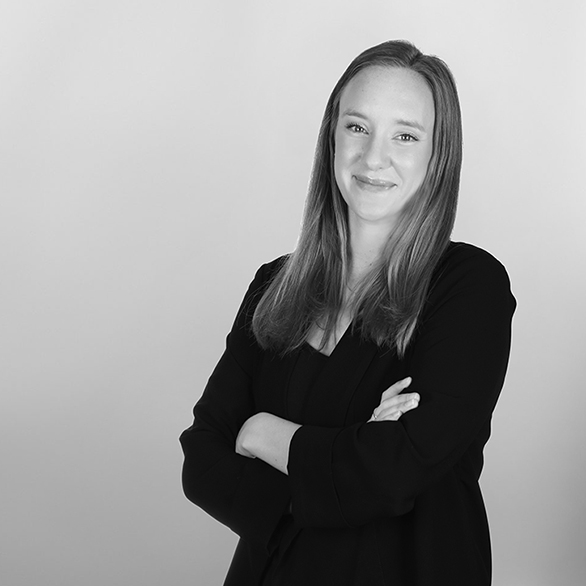
Casey grew up in Kingston, Ontario, and attended the University of Guelph. In 2010 Casey made the move from Ontario to Whistler, where she started as a team lead for the guest services department at Whistler Blackcomb Ski Resort. From there Casey progressed through the company, working for the food and beverage department and the sales and marketing department, and she eventually moved back to guest services as the assistant manager. In 2018 Casey took a leave of absence to travel to New Zealand and Australia, which led to her moving to Auckland, New Zealand. Casey worked on the community engagement and insights team for the Auckland City Council before returning to Canada. Casey is fluent in French and is an avid sailor, hiker and snowboarder. She loves travelling, reading and drinking wine (preferably all three at once). A fun fact about Casey is that she has an identical twin, who also lives on the west coast!
Not only are you the operations manager for all three locations of Reportex (HQ, All-Star and Island), but you are a busy bee with a lot of amazing hobbies. Now living in Vancouver, you probably get the most out of all your hobbies. What is some advice you can give about not giving up on your hobbies during the pandemic?
This is a fantastic question, and one I am sure has come up for a lot of people recently. Keeping up with my hobbies has been challenging, especially considering I returned to Canada and moved to Vancouver in the middle of the pandemic, so finding my groove took slightly longer than it usually does when I move to a new place. I love hiking, biking, boating and snowboarding, so I am lucky that the North Shore is a short drive away, but it can still be a challenge to find the motivation to get out there these days. I would say I have a few pieces of advice to give:
- Plan. A lot of activities or outdoor areas require reservations these days (even though they didn’t in the past), so do your research and see what their COVID protocols are.
- Be patient with yourself. Don’t expect the same results that you would have a year ago. We have all been through a lot, and our minds, bodies and souls are trying to recover in different ways.
- Recognize and appreciate the benefits. One of the motivators for me getting out and doing the things I love is remembering how happy and healthy they make me feel. While it can be a challenge to get out of the house and make the moves, the reward is so worth it! Whether it is a hike through the fresh mountain air or giving yourself a few quiet, uninterrupted hours to be creative, it pays off, and you will always feel better for it.
You are overseeing Reportex’s headquarters expansion. What are you most excited to showcase to all of our clients in our new space?
There are so many things about this expansion that have me excited. This is a new space with 20,000 square feet of new custom-designed boardrooms, lounges, serveries and offices. The team has worked incredibly hard to consider every little detail, with a goal of offering our clients the highest quality of service. Christy and the design team have done a wonderful job with the space, and I think it will be quite clear how every minor detail was considered in the design process. From the extra soundproofing of meeting rooms to our showpiece boardroom (completely kitted out with leading-edge videoconferencing technology) to the state of the art kitchen from which we plan to provide a new and exciting food and beverage program — there was no piece left unconsidered.
As someone who comes from an artistic family, I am also excited to see Shari’s custom artwork displayed throughout our spaces. Shari has put a lot of thought, heart and effort into designing pieces that will fit well and really lend themselves to the space.
This year has been unexpected, to say the least, but Reportex has been blessed to go forward with our expansion this spring. What do you feel was the main focus to keep business going during this pandemic?
This is an enormous accomplishment in normal times, but to have been able to continue with this expansion through the pandemic is something I feel we should all take pride in. It has been an incredibly challenging year, yet there has been such strong commitment and drive to reach our end goal, and for that I think this whole team should be incredibly proud. And of course we owe a lot of thanks to Christy for being our fearless, driven, dedicated leader through it all.
I think the focus since the start of this pandemic has been to continue to operate in a safe, respectful and innovative way. At Reportex I feel we are some of the lucky ones who were able to adapt and redirect very quickly to ensure our clients and staff were supported in all aspects. While there have undoubtedly been hurdles and challenges throughout the entire process, the goal has always been to continue to provide the excellent and professional service that we have become so well known for over the years and to ensure our team members are supported, comfortable and provided with the flexibility everyone needs right now.
At Reportex our core values of team, mentorship, equality, community and industry are central to what we do. Which of these values resonates most strongly with you and why?
I feel as though the value that resonates most with me changes depending on what projects I am working on and what my current focus is. For example, I just came out of a heavy eight months of learning the ropes and trying to understand the wild world of Reportex, so during that time I was really dedicated to mentorship and appreciating that process.
Now that I have a clear understanding of what is required of me and my role, I have shifted to focus on the value “team.” In the past when I was training new groups at Whistler Blackcomb, there is a quote from Henry Ford that I used:
“Coming together is a beginning; keeping together is progress; working together is success.”
What I think is interesting about this quote is that it points out that teamwork is a journey, not something you can just instantly shift into. To work well on a team and to be truly successful, you need to understand and respect the communication and working styles of everyone in the group — these are things that need to be learned over time. This is not instant, and it is important to respect this when working on a new team.
We have been talking a bit about wellness on the blog and through our Slack channels. Do you have a favourite way to recharge or any tips for staying well?
Right now I am trying to be very easy on myself. These are hard times, and it does not take a lot to hit capacity, whether it be physically or mentally. I know that for myself the most important thing right now is to ensure I am balancing my screen time. It is easy to spend a whole day at work looking at my computer screen to then go home and spend all night looking at the TV screen; however, I am trying to be extremely mindful of this.
Julia Chalifoux, Reportex’s project manager, started a walking challenge in February, and it has been so incredibly helpful with getting me into a good routine. I have been much better about getting out for walks after work, and with longer days ahead I am hoping to keep up with this. An hour of fresh air and no screen is an excellent way to decompress and regroup. I have also started leaving my phone at home during these walks (my housemate was passionately against this idea until I promised to carry a whistle with me, which I now do) as I was finding that I would pull out my phone and get distracted by something on yet another screen.
I think the most important thing for everyone right now is to listen to your mind and body. While it is very easy to say this, the action is much harder. An hour of quiet time a day gives me the opportunity to check in with myself and determine what I need, but maybe for someone else it’s an hour of blaring music and dancing like nobody’s watching — whatever works!
Introducing Mindful March
/in Fun, Tips & Tricks, Wellness/by veritextcanada_48bzhlBy Kiran Deol, Business Development Coordinator

As we round out one full year of the pandemic, you may be feeling restless and feeling like you cannot see the light at the end of the tunnel. You are not alone! We are all feeling this way. Here at Reportex we are lucky to have such a great team to support us in anything we need, even if it is as simple as a little chat. In support of our team we have been focusing on wellness initiatives each month — February was all about Walking for Wellness, and as we move into a new month, we are introducing Mindful March. The goal for this initiative is to focus on shifting your headspace to where you want it to be, with the support to help you achieve your mindful goals along the way!
A whole year ago, at the beginning of this pandemic, I decided to organize my life. I still had boxes in the storage room from moving, I was newly-ish married and I had just gotten back from my brother’s wedding in Cancun. I spent some time reorganizing my house — and may I just say that it was spotless! Next I wanted to organize my headspace. I was all over the place with what I wanted but was ready to start a new challenge. Part of this challenge was to be a happier person.
With this in mind I started a new job at Reportex at the strangest time possible (but I must say that starting a new job during this time had a lot to do with my mental well-being and became such a blessing). I vowed I would find the person I once was and would prioritize the people and things I love in a new way. The hardest part of doing this was being able to divert my mind from the things I did not want to have power over me. As months went on, the struggle was to not give in to the negativity of the pandemic. That is when I decided it was time to get back into meditation! I had included meditation in my routine in the past but hadn’t practised in over three years, and I remembered how much it had helped with my positive headspace, my work life and my personal life.
I feel that when many people think of meditation, they picture a monk sitting in silence for hours at a time with chants or mantras being repeated. Yes, this is meditation; however, it can also be much, much simpler. For example, whenever you feel overwhelmed and decide to take a minute to close your eyes and take a couple of deep breaths — well, that is a form of meditation! You are focusing on your breath to get yourself back on track and calm yourself down.
The biggest obstacle most people have with meditation is being able to shut off their minds for even one minute, so here are some tips to help you achieve a still mind in your meditation journey:
- Be consistent! I find that being consistent is key with practices like meditation. It takes the human brain 21 consecutive days to get into a routine, so if you can successfully meditate (for even a minute) for 21 days, you are on the right track! Be consistent in your timing — set aside time in either the morning or evening. Morning meditation has the best benefits for me, but if you prefer the evening, just make sure it is the same time every day.
- Find a space. Set up an area in your home that is comfortable and quiet. Your setup does not have to be complicated. Personally, I have a comfy cushion on the floor, and I sit in front of the fireplace in my living room. Ideally you want to be in a space where you know you will not be bothered.
- Focus on a sound. Once you are nice and comfy and sitting in a comfortable position, find a sound that soothes you. I use sound because it helps me concentrate on the present as opposed to having all different thoughts going through my head, like what I will make for breakfast! The type of sound is a personal preference. There are many options for meditation sounds that you can play on YouTube: a running river, ocean sounds, birds chirping or acoustic music. There are also guided meditations. I would suggest trying a couple of different things to see what works for you. (I play a mantra my grandmother used to play, which I always found relaxing.)
- Set a timer. To begin, start a timer on your phone and start with as little as one minute. Shutting your mind off for one minute is harder than you think, but if you are successful in shutting your mind off for one whole minute, increase the time each day until you have a time that you are comfortable with and that you see yourself sticking to. Do not sit down and expect to turn off your mind for an hour at a time! At the beginning of my meditation journey I started off with one minute and worked my way up, and I can now successfully turn off my mind and be still in meditation for 20 minutes, which does wonders for me.
- Be patient. Do not be hard on yourself. If your mind starts to wander off, you may be tempted to give up. Sitting still is not an easy thing to do. We are not necessarily used to setting aside time for ourselves, and just like a muscle, the mind needs to be exercised. If you begin to feel your mind wander off to something else, simply acknowledge it and bring yourself back.
- Focus on your breath. This is the most important part of meditation because your breath is ultimately how you control your body. There are several different breathing techniques to use. I use the 4-7-8 method: breathe in through your nose for four seconds; hold the breath for seven seconds; exhale through your mouth for eight seconds. I repeat this five times and then relax my breathing for the rest of my meditation. This technique of breathing decreases fatigue, anxiety and symptoms of asthma, works to manage stress and improves migraine symptoms. Lastly, I find that this type of breathing wakes up my whole body! I have not had a cup of coffee since August, and although I do miss the nudge, this breathing exercise really helps to get my blood flowing and wake me up.
- End with intention. After my timed meditation I simply think of three things I am most grateful for and say them out loud. This is a great way to conclude your meditation and take the time to focus on gratitude. I am forever grateful for having 20 minutes of meditation each day to rest my mind and recharge.
Meditation has become a daily routine for me, and I cannot stress enough how beneficial it has been for me over the last little while, especially while coping with pregnancy and this ongoing pandemic. It helps me stay positive and productive and keeps my energy levels high. Meditation is a very personal practice, so finding what is comfortable for yourself is key. If you can shut off your mind, you’ll be successful! I wish you all the luck in your Mindful March journey.
The divine soul within me bows to the divine soul within you, as in namaste.
Mindset Series Week 4: Name Your Optimal Response #WellnessWednesday
/in Connection, Team, Tips & Tricks, Wellness/by veritextcanada_48bzhl
“Our goals can only be reached through a vehicle of a plan, in which we must fervently believe, and upon which we must vigorously act. There is no other route to success.” — Pablo Picasso
Intro:
Today is our final post in our series about navigating change. So far we have covered naming your challenge, naming your feeling, naming your self-care language and finally today we discuss naming your optimal response.
Step 4: Ask yourself/decide what an optimal response for you could be
You can choose what perspective you have about this change/problem/hard thing. After you have recognized what you have been going through, allowed yourself to feel all the feels about it and comforted yourself with some good self-care, you will now have the mental space to figure out the optimal way for you to orient yourself and respond to this change.
For example:
This reorganization is hard for me, and I want to have an easier time with it. I can’t change it, so I want to figure out how to accept it, feel more confident with it and take action in figuring out my new role.
Ask yourself:
- If this isn’t going away, what can I do?
- If this isn’t going away, what is a more productive perspective for me to have?
Pro tip:
Make time to do the mental fitness that will help you get through the inevitable ups and downs with less stress and more ease, confidence and sureness. One fun way to do so is by working on a colouring page with a message that resonates with you. Not only will you have fun colouring, but you will also have a beautiful reminder to hang up in your home or office. Examples of some free colouring pages can be found here.
Final words:
We cannot change our perspective or our orientation to hard things/change/problems unless we acknowledge what they currently are. A growth mindset will help us navigate any challenge with tenacity, resilience, innovation, curiosity, empathy, creativity and discernment. A fixed mindset will keep us resistant to change, have us give up and make us feel threatened, righteous in our perspective, closed and shut down.
“Hard things take time to do. Impossible things take a little longer.” — Percy Cerutty
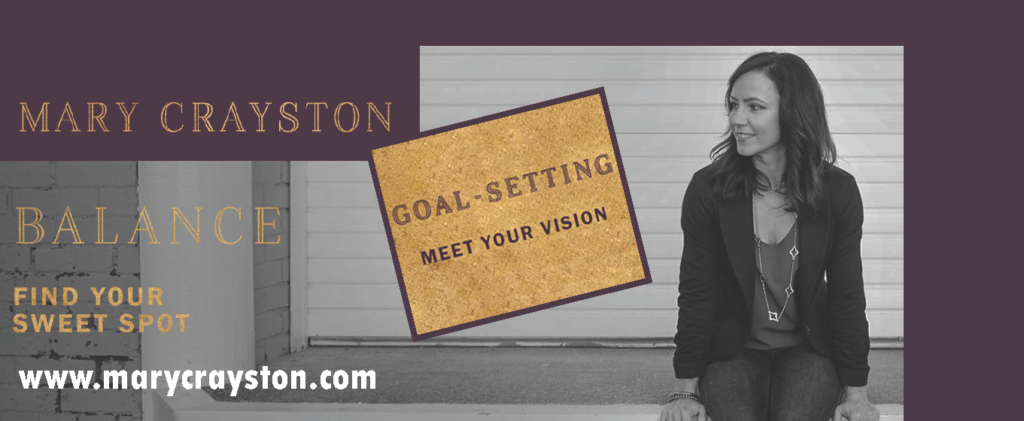
Mindset Series Week 3: Name Your Self-Care Language #WellnessWednesday
/in Connection, Team, Tips & Tricks, Wellness/by veritextcanada_48bzhl
“Almost everything will work again if you unplug it for a few minutes, including you.” — Anne Lamott
Intro:
So far on the blog over the past few weeks we have discussed the importance of naming the circumstance and naming how you think and feel about the circumstance. Today we will be discussing the importance of naming your self-care language. Feeling squeamish already? Stick with me here.
Step 3: Give yourself a break/have compassion for yourself — be empathic
You must have compassion and empathy for yourself. Allow yourself to feel and think whatever is true for you. This is how you would respond to a friend going through a change or hard thing. You are entitled to feel what you do.
For example:
Of course I am stressed and worried about this reorganization. There is so much uncertainty, and I have to do everything differently.
Ask yourself:
- What would I say to someone else going through this?
- What do I need to take care of myself through this?
Pro tip:
Learning what we need to feel better helps us communicate more effectively with ourselves and others. Curious about your self-care language? You can learn more here.
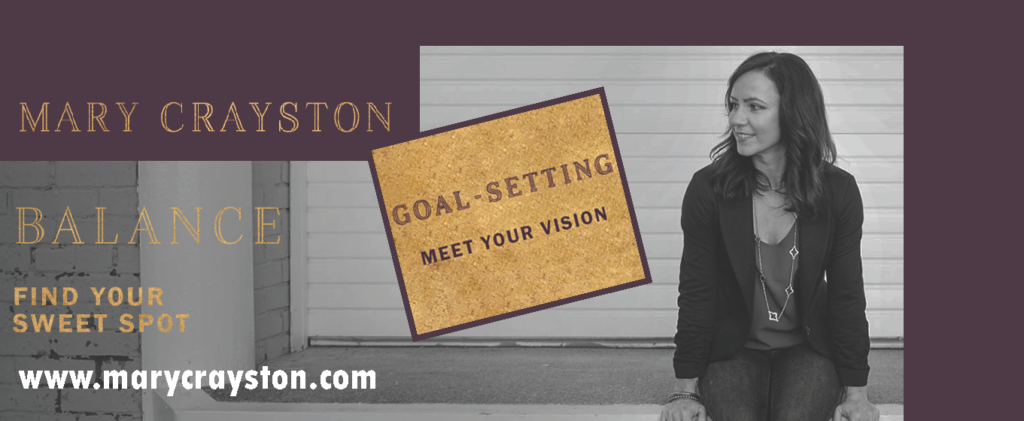
Mindset Series Week 2: Name Your Feeling #WellnessWednesday
/in Connection, Team, Tips & Tricks, Wellness/by veritextcanada_48bzhl
“We should lock the door and scream that curse word we know. It’s a good one!” – Anger, Inside Out
Intro:
Last week on the blog we discussed the importance of acknowledging/naming the circumstance (perceived problem/change). This week we will discuss the importance of acknowledging/naming how we think and feel about the circumstance (perceived problem/change).
Step 2: Feeling – Acknowledge/name how you think and feel about the circumstance (perceived problem/change)
You may not be able to change the thing that is stressing you, in which case your only option is to change your perspective if you want less stress. First, however, you will need to know what your current perspective/feeling is on the issue.
For example:
You can’t change that there is a reorganization happening, but you can change your perspective.
Ask yourself:
- What is my perspective on this thing?
- What do I think and feel about it?
- How is it showing up in my life?
- How am I talking about it with others?
- What is my attitude about it?
Pro tip:
Sometimes it is hard to know exactly how we feel. This movie from 2015 does a great job at showcasing all the emotions that live in all of us to varying degrees. It does so in a fun and approachable manner. See the trailer for Inside Out here.

Mindset Series Week 1: Name Your Challenge #WellnessWednesday
/in Connection, Team, Tips & Tricks, Wellness/by veritextcanada_48bzhl
“Change can be tough, but I’ve never heard anybody say it wasn’t worth it.” – Carol Dweck
Intro:
Change can feel hard. It can be a problem for some of us. Sure, some people thrive and get energized. For many of us it can be worrisome and tiring. We can get overwhelmed and destabilized. Our work is not to try and make those feelings go away. We have to acknowledge and understand what we are going through and how we are currently reacting to it. From there we can figure out how to optimally orient ourselves to the problem. This approach is a growth mindset approach.
Starting today (and for the next three weeks), I will be covering the four steps on how to navigate change with a growth mindset.
Step 1: Naming – Acknowledge/name the circumstance (perceived problem/change)
You literally can’t take action on an issue/problematic circumstance if you don’t recognize you are in one. Too often we don’t take a beat to realize where our stressful feelings are coming from.
Once you recognize you are in one, however, you can then decide what to do about it.
For example:
Let’s say your company is going through a reorganization and you’re stressed. If you don’t recognize that going through a reorganization is stressing you, you’ll stay stressed.
Ask yourself:
- What is happening (circumstance)?
- What is the thing that is causing my stress/anxiety/worry?
Sometimes acknowledging an issue is enough to put an action plan in place, or at the very least it can allow us to be more mindful about our associated thoughts, feelings and behaviour.
Pro tip:
Wondering what exactly a growth mindset is? Here are a few resources:
- A TED Talk introduction to the growth mindset concept by Carol Dweck
- Mindset: The New Psychology of Success by Carol Dweck

